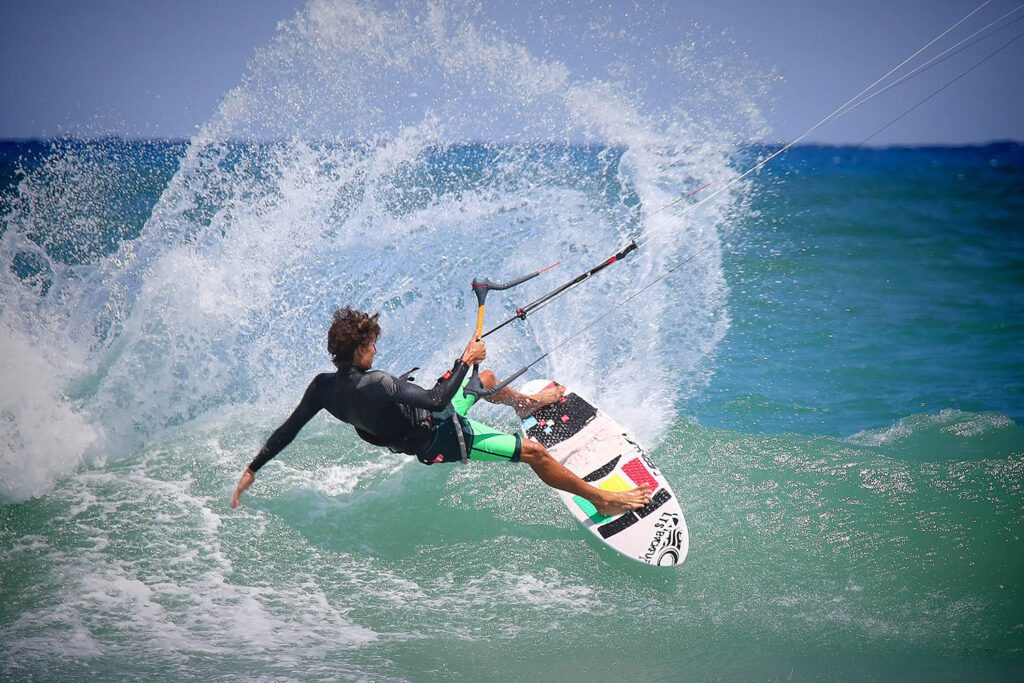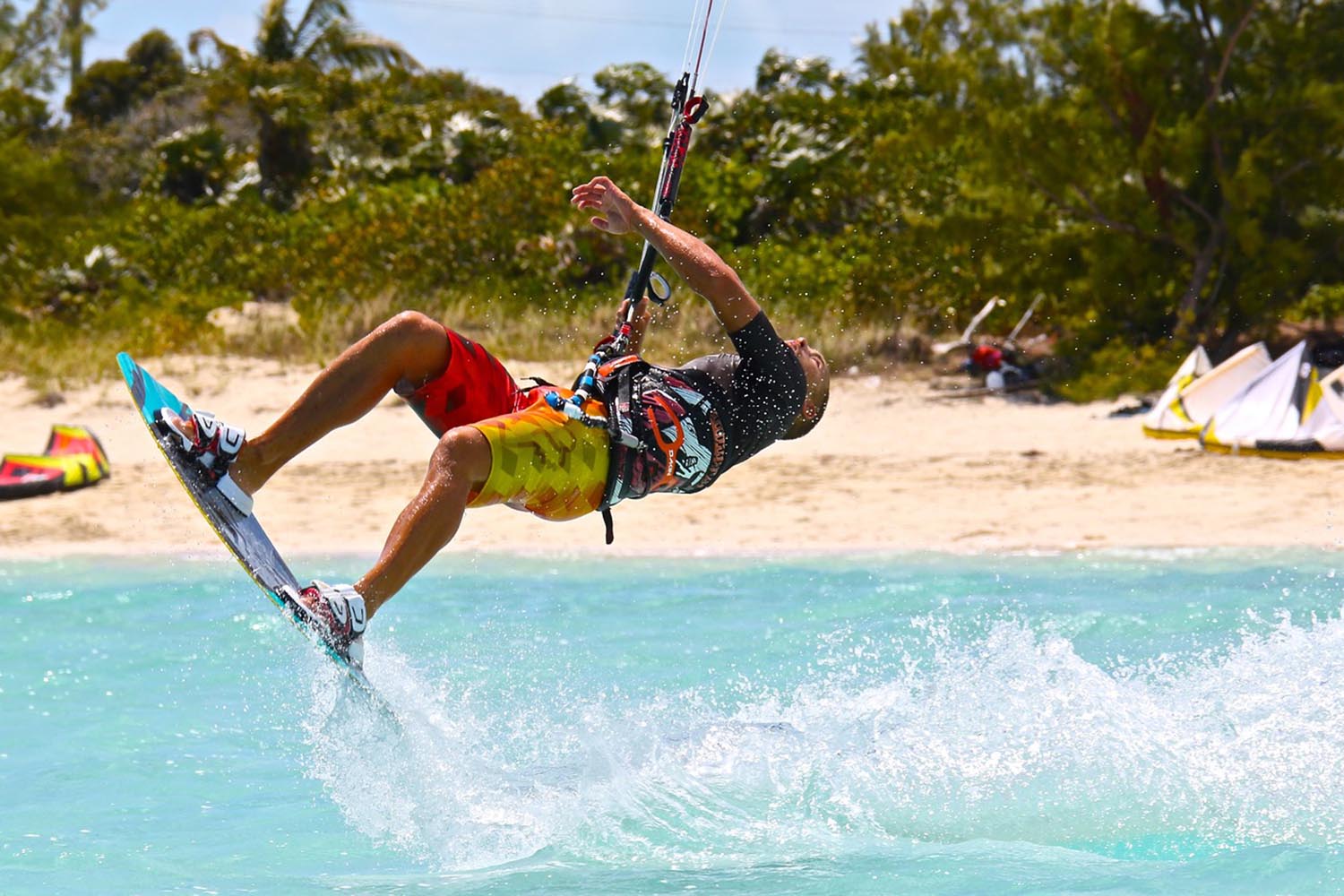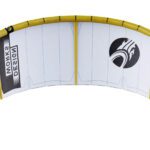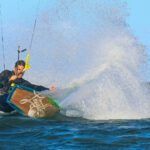The Ultimate Guide to Kiteboarding
Kiteboarding, a thrilling fusion of paragliding, windsurfing, and surfing, has taken the world by storm. As enthusiasts seek to elevate their skills, mastering advanced wave tricks becomes a test of their prowess. In this guide, we’ll delve deep into 15 groundbreaking wave tricks that will challenge you and redefine your kiteboarding experience.
The Surfing Cutback
The Surfing Cutback is all about carving hard on the wave’s face, redirecting the board toward the breaking wave. This maneuver demands precision, with riders ensuring their kite is positioned downwind and maintaining consistent power throughout the turn.
Aerial Off the Lip
A daring move, the Aerial Off the Lip requires riders to approach the wave, pop off the lip, and land smoothly. Timing is critical – launch just as the tide begins to break, ensuring a seamless aerial transition.

The Tail Slide
In the Tail Slide, riders slide the tail of their board across the wave’s surface. To execute this trick, approach the tide at a 45-degree angle, press down on the bottom, and let the board slide while maintaining a controlled kite position.
Downwind 360
An exhilarating spin move, the Downwind 360 involves rotating the board 360 degrees downwind. The key is maintaining kite stability while using the kite’s pull to initiate the spin.
Top Turn Snap
The Top Turn Snap is a sharp, fast turn executed at the wave’s peak. Riders must approach the wave, pop the board’s tail, and snap it back, resulting in a dynamic change in direction.
Vertical Re-entry
This bold maneuver, Vertical Re-entry, entails shooting straight up the wave’s face and re-entering with a swift downward motion. It’s all about speed, precision, and the proper kite positioning.

Roundhouse Cutback
The Roundhouse Cutback combines a deep cutback with a rebound off the whitewater. Riders carve deep into the wave, then rebound off the foam to complete a whole arc.
Wave 180 Spin
The Wave 180 Spin involves a half-spin on the wave’s face. With a swift rotation, riders change their stance from regular to goofy (or vice versa), adding flair to their ride.
Frontside Off the Lip
In the Frontside Off the Lip, riders approach the wave frontside, pop off the lip, and rotate their body and board semi-circularly before landing.
Tandem Wave Ride
An actual test of coordination, the Tandem Wave Ride involves two riders catching and riding a wave simultaneously. Communication and synchronization are crucial for this dual display of skill.
Backside Air Reverse
The Backside Air Reverse sees riders launching into the air backside, rotating their board, and landing in a reverse stance. Mastery of kite control is essential for this aerial spectacle.
Wave-to-Wave Transition
The Wave-to-Wave Transition is about smoothly transitioning from one wave to another. Riders must maintain speed, ensuring they seamlessly catch the next wave’s energy.
Double Cutback
A display of agility, the Double Cutback involves two sharp carves on a single wave. Riders cut back once, ride the wave’s face, then execute another cutback quickly.
Lip Line Float
In the Lip Line Float, riders float along the wave’s lip, gliding smoothly before dropping back onto the wave’s face. This trick demands impeccable balance and kite positioning.
Wave Barrel Ride
Last but certainly not least, the Wave Barrel Ride is the pinnacle of wave tricks. Riders position themselves deep inside the wave, riding within its barrel. Precision and timing are paramount to emerge triumphantly from the wave’s tunnel.
FAQ:
What equipment do I need to perform these advanced wave tricks?
For these maneuvers, you’ll require a kite suitable for wave riding, a kiteboard tailored for waves, a harness, and safety gear such as a helmet and impact vest. It’s also recommended to use a wetsuit or rash guard for protection against the elements.
How long does it typically take to master these tricks?
The time it takes varies based on individual aptitude, previous kiteboarding experience, and practice frequency. Some tricks take a few weeks, while others require several months of consistent practice.
Are there any recommended safety precautions when attempting these tricks?
Absolutely. Always:
- Wear safety gear, including a helmet and impact vest.
- Practice in familiar waters, away from obstacles and heavy traffic.
- Ensure you’re comfortable with basic kiteboarding skills before attempting advanced maneuvers.
- Never kiteboard alone; always have someone to keep an eye on you.
Can I perform these tricks in any weather conditions?
No. It’s crucial to kiteboard in suitable conditions. Check the forecast for consistent winds and familiarize yourself with local wave patterns. Avoid extreme conditions, especially when attempting new tricks.
How can I improve my chances of successfully executing these tricks?
Apart from regular practice, consider enrolling in advanced kiteboarding courses. Experienced instructors can provide valuable insights, correct your form, and offer techniques to improve faster.
Conclusion
Kiteboarding is a thrilling sport that offers endless opportunities for growth and challenge. These 15 advanced wave tricks are a testament to the sport’s diversity and the exhilarating experiences it promises. While they demand dedication and patience, mastering them brings unparalleled satisfaction. Always prioritize safety, continually refine your skills, and remember that every expert was once a beginner. Embrace the waves, harness the wind, and let your kiteboarding journey take you to new heights!
Author
Latest entries
 WatersportsSeptember 16, 2024Cabrinha Moto X: Enjoy the Ride
WatersportsSeptember 16, 2024Cabrinha Moto X: Enjoy the Ride WatersportsMay 19, 2024Cabrinha 2024 Moto XL Review: The Ultimate Lightwind Kite
WatersportsMay 19, 2024Cabrinha 2024 Moto XL Review: The Ultimate Lightwind Kite WatersportsDecember 16, 2023Kiteboarding Travel
WatersportsDecember 16, 2023Kiteboarding Travel WatersportsDecember 14, 2023RED BULL KING OF THE AIR 2023
WatersportsDecember 14, 2023RED BULL KING OF THE AIR 2023




